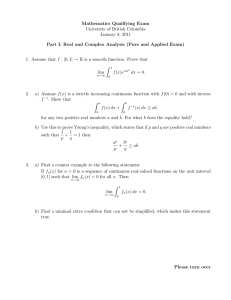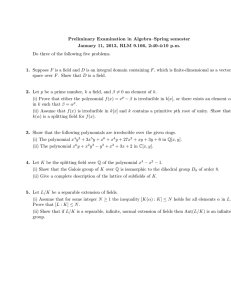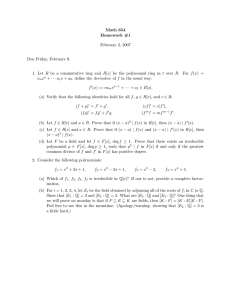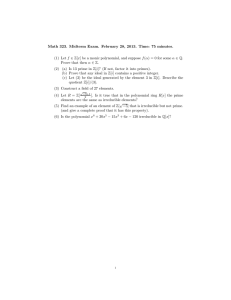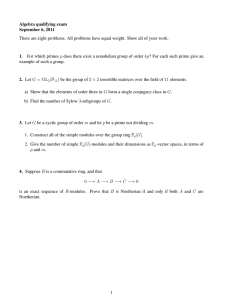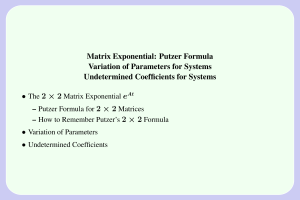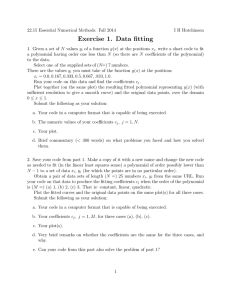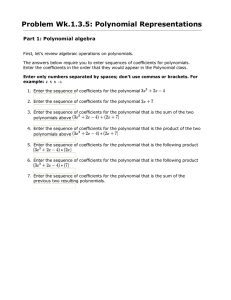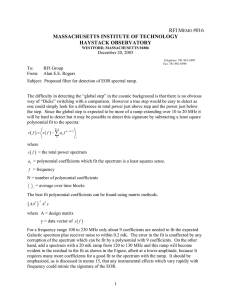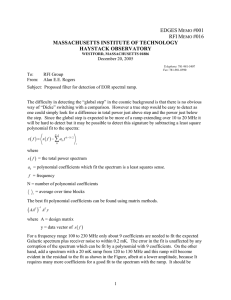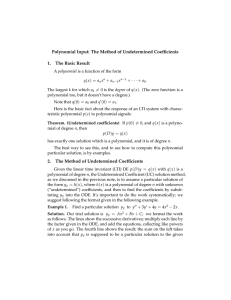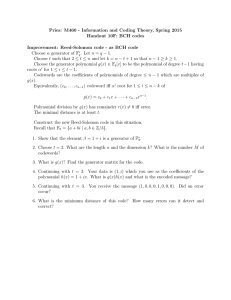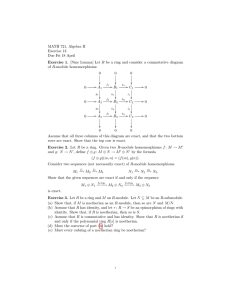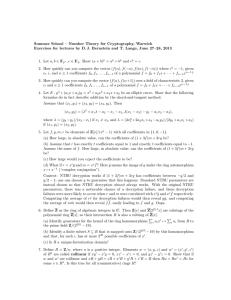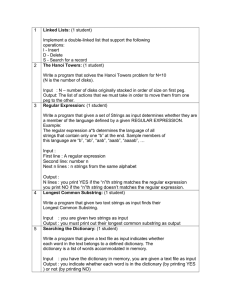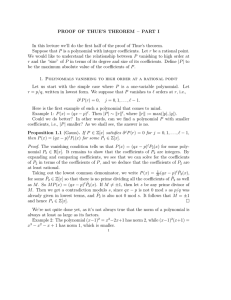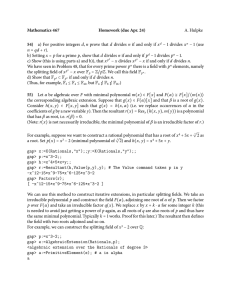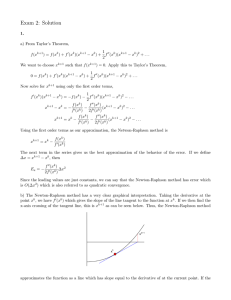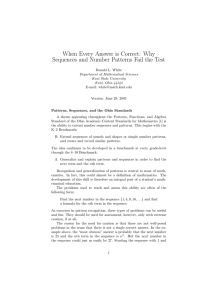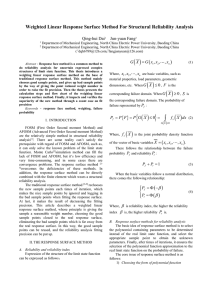Mathematics 666 Homework (due Jan. 29) 1) A. Hulpke
advertisement
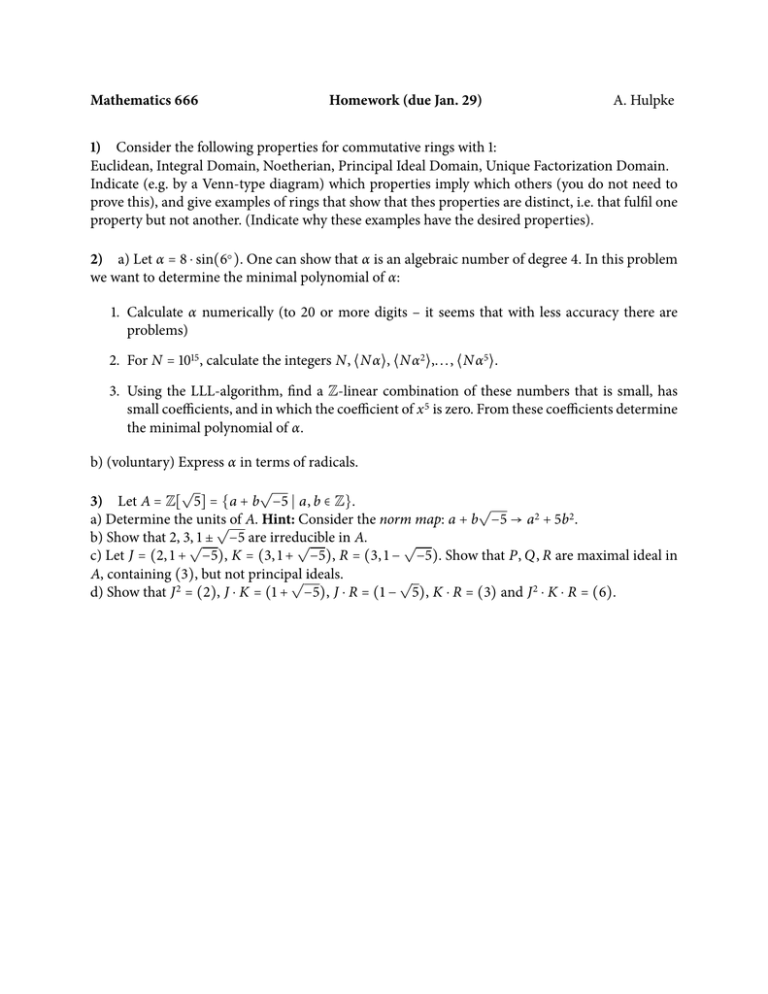
Mathematics 666
Homework (due Jan. 29)
A. Hulpke
1) Consider the following properties for commutative rings with 1:
Euclidean, Integral Domain, Noetherian, Principal Ideal Domain, Unique Factorization Domain.
Indicate (e.g. by a Venn-type diagram) which properties imply which others (you do not need to
prove this), and give examples of rings that show that thes properties are distinct, i.e. that fulfil one
property but not another. (Indicate why these examples have the desired properties).
2) a) Let α = 8 ⋅ sin(6○ ). One can show that α is an algebraic number of degree 4. In this problem
we want to determine the minimal polynomial of α:
1. Calculate α numerically (to 20 or more digits – it seems that with less accuracy there are
problems)
2. For N = 1015 , calculate the integers N, ⟨N α⟩, ⟨N α 2 ⟩,. . . , ⟨N α 5 ⟩.
3. Using the LLL-algorithm, find a Z-linear combination of these numbers that is small, has
small coefficients, and in which the coefficient of x 5 is zero. From these coefficients determine
the minimal polynomial of α.
b) (voluntary) Express α in terms of radicals.
√
√
3) Let A = Z[ 5] = {a + b −5 ∣ a, b ∈ Z}.
√
2
2
a) Determine the units
√of A. Hint: Consider the norm map: a + b −5 → a + 5b .
b) Show that 2, 3,√1 ± −5 are irreducible
in A.
√
√
c) Let J = (2, 1 + −5), K = (3, 1 + −5), R = (3, 1 − −5). Show that P, Q, R are maximal ideal in
A, containing (3), but not principal
√ ideals.
√
d) Show that J 2 = (2), J ⋅ K = (1 + −5), J ⋅ R = (1 − 5), K ⋅ R = (3) and J 2 ⋅ K ⋅ R = (6).

